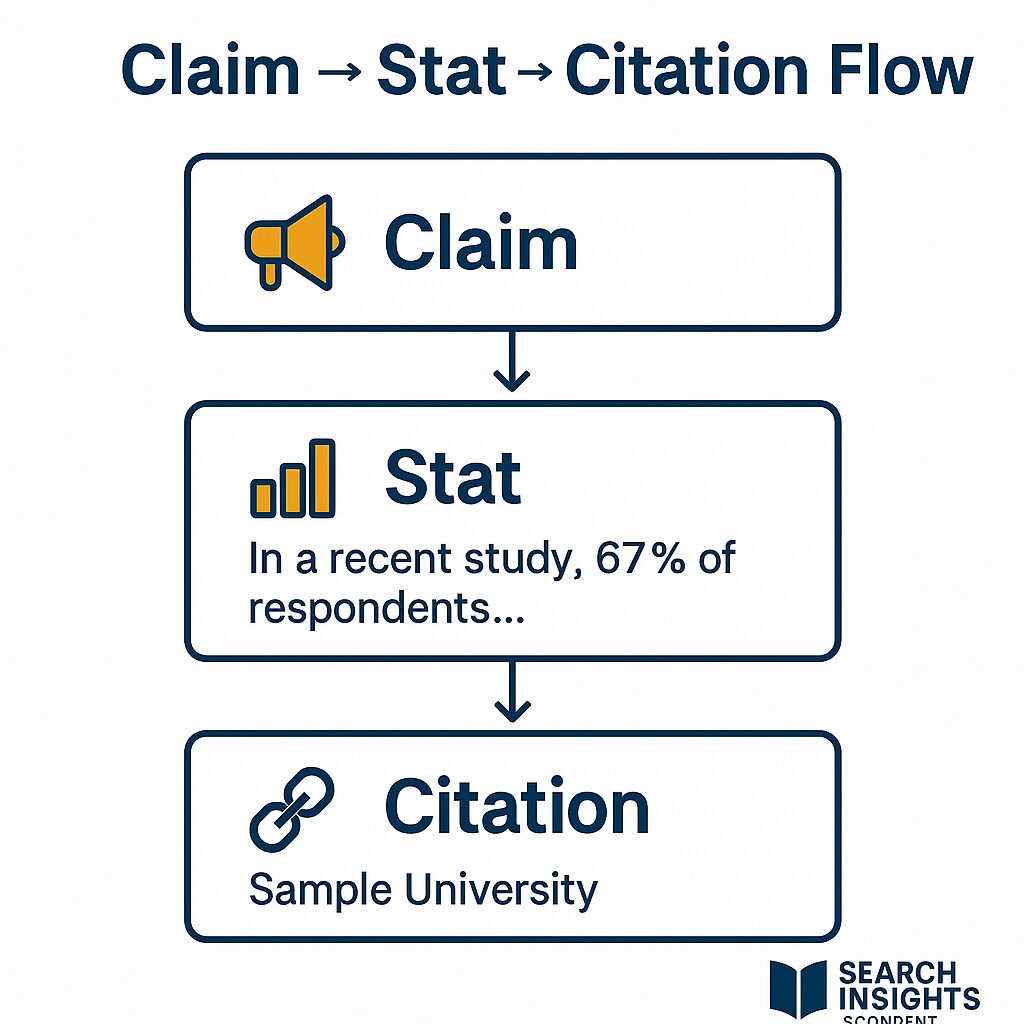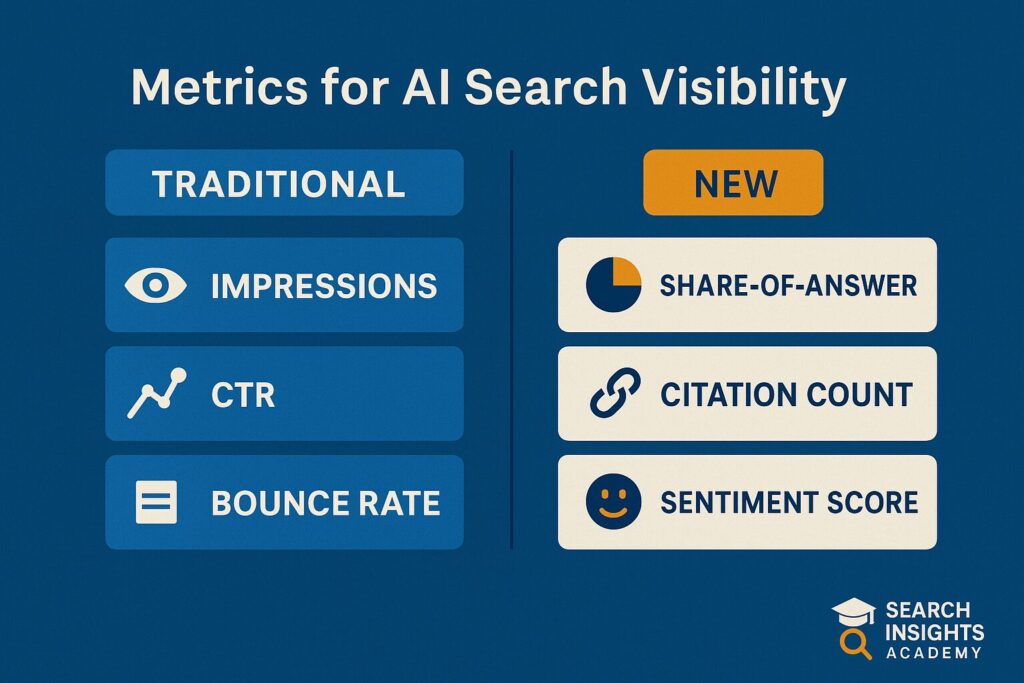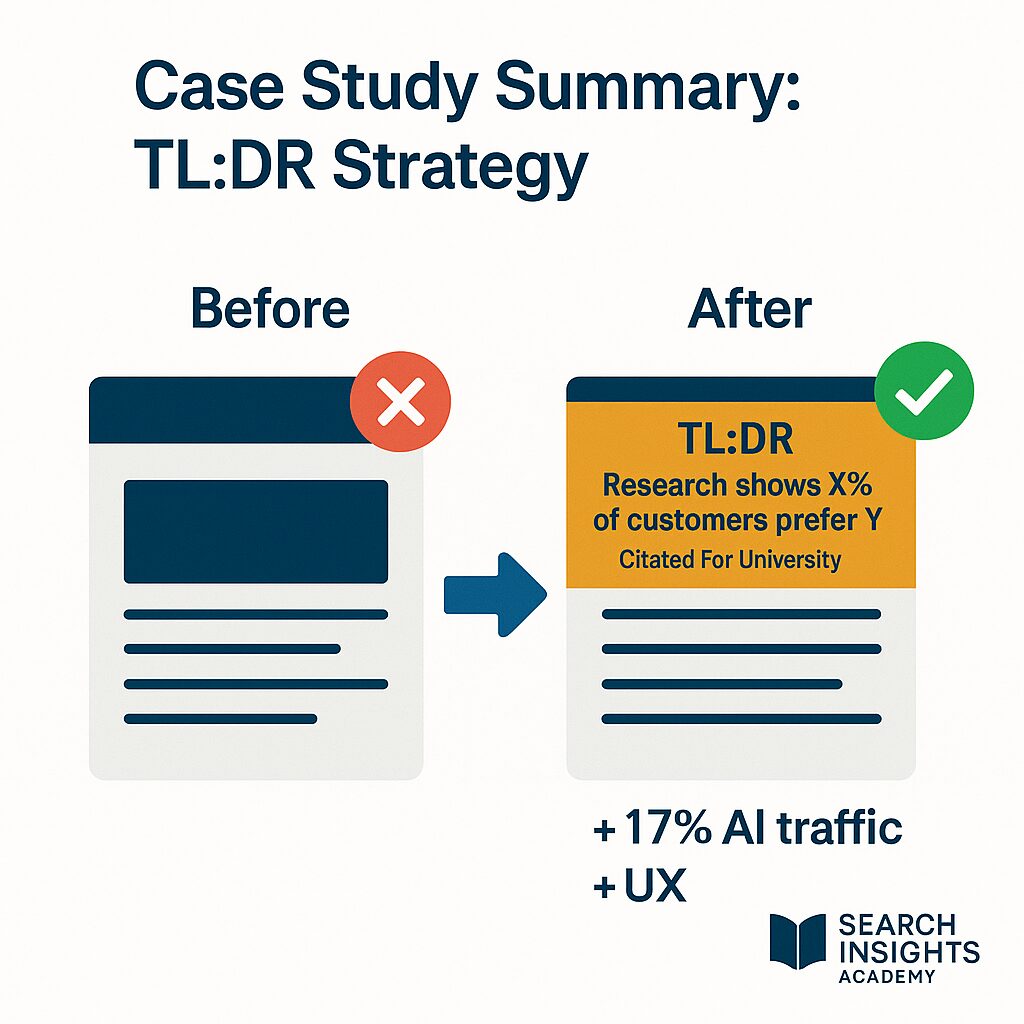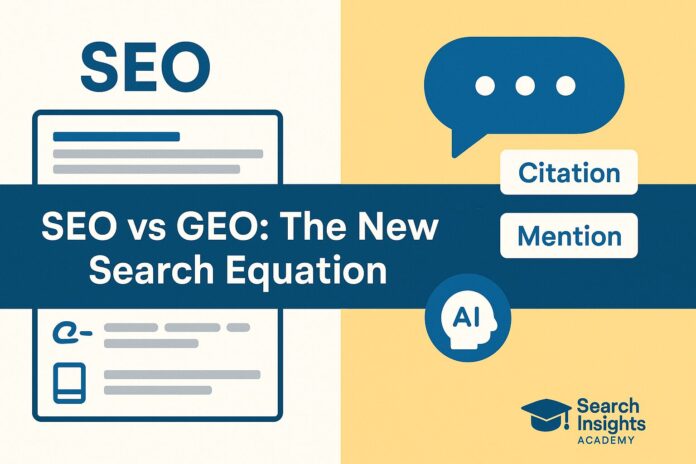With generative AI reshaping search experiences, digital marketers face a critical question: how will traditional SEO evolve alongside emerging Generative Engine Optimization (GEO)? Industry leaders Rand Fishkin, Lily Ray, and Aleyda Solis offer reassurance—SEO isn’t dying, but it is transforming significantly as AI-driven search becomes increasingly prominent.
This comprehensive guide unpacks the relationship between SEO and GEO, equips you with actionable strategies from leading experts, and helps you build an integrated approach that maintains visibility in both traditional and AI-powered search experiences.
Understanding the Search Paradigm Shift
From Links to AI Answers
Search results have evolved dramatically from their humble beginnings as simple blue links. Today, generative AI provides comprehensive, summarized answers directly on search pages, fundamentally changing user behavior.
According to research from Rand Fishkin at SparkToro, nearly 60% of searches now end without a click to any website, highlighting the critical need to optimize for visibility within AI-generated answers themselves. This “zero-click” phenomenon represents one of the most significant shifts in search marketing history.

How AI Impacts Click-Through Rates
Lily Ray, VP of SEO at Amsive Digital, has documented how Google’s AI Overviews significantly reduce organic click-through rates. Despite Google’s reassurances about sending traffic to websites, Ray’s analysis and multiple industry studies suggest that AI summaries effectively satisfy user queries, resulting in fewer clicks overall.
The data is compelling: sites appearing below AI-generated answers typically experience reduced click-through rates, making optimization for inclusion within these AI summaries a new strategic imperative.
SEO vs GEO Defined (2025)
While traditional SEO continues to focus on optimizing for search engine crawlability, relevance signals, and backlink acquisition, GEO specifically targets optimization for generative AI models like ChatGPT, Google’s Gemini, and Bing AI.
Rand Fishkin emphasizes a fundamental difference: the “currency” for GEO isn’t links but rather mentions and citations across authoritative datasets that train AI models. This distinction underscores why digital PR and strategic brand positioning have become increasingly valuable in an AI-driven search landscape.
SEO Fundamentals That Still Matter
Prioritize E-E-A-T
Lily Ray consistently advises marketers to focus on Google’s E-E-A-T signals (Experience, Expertise, Authority, Trust) by publishing authoritative content written by genuine human experts. As Google’s Search Quality Rater Guidelines make clear, the search engine places tremendous value on authenticity and expertise—especially as AI-generated content saturates search results.
Demonstrating first-hand experience and genuine expertise through your content remains one of the most effective ways to differentiate your site in both traditional search results and AI-generated answers.
Maintain Technical SEO
Aleyda Solis emphasizes that technical SEO fundamentals like crawlability, indexability, site speed, and proper implementation of structured data and schema markup remain critically important. In fact, structured data not only helps with traditional SEO performance but also aids AI systems in accurately interpreting and citing your content in generated answers.
Research from the Chrome team shows that site speed and overall user experience continue to play significant roles in how search engines evaluate content quality, making technical optimization an essential foundation for both SEO and GEO success.
Deep Dive into GEO
Content Formatting for AI
Clear, well-structured content dramatically increases the likelihood of inclusion in generative AI responses. Solis highlights specific formatting techniques that improve AI comprehension:
- Descriptive headers and subheaders that clearly indicate section content
- Structured snippets and concise bullet points for scannable information
- Data tables that organize comparative information
- Bold text for key concepts and definitions
- Clear paragraph structure with one main idea per paragraph
These formatting approaches make content more digestible for both human readers and AI systems, increasing the chances your information will be featured in AI-generated responses.
The Importance of Mentions and Original Data
Original research and verifiable statistics significantly enhance GEO performance. Fishkin advises creating content that contains unique, citable data points that other reputable sources reference.
This strategy creates a virtuous cycle: as authoritative sites cite your original data, the visibility of your brand increases within AI training datasets, making your content more likely to appear in future AI outputs. Tools like HARO (Help A Reporter Out) and original research studies can help generate these valuable, citable resources.
Voice and Multimodal Optimization
As AI becomes increasingly multimodal, optimization extends beyond text. Consider these approaches:
- Incorporate conversational language patterns and comprehensive FAQ sections to improve voice search visibility
- Provide clear, descriptive alt text for images to enhance discoverability in visual AI systems like Google’s Gemini Vision
- Include transcripts for video and audio content to make multimedia assets accessible to AI
- Use descriptive, keyword-rich file names for all media assets
Google’s research on multimodal AI shows that systems like Gemini can now understand content across text, images, audio, and video simultaneously, making cross-format optimization increasingly important.
Comparing SEO and GEO Side-by-Side
User Intent Differences
Traditional SEO typically targets specific keyword-based queries, whereas GEO must anticipate more detailed, conversational AI prompts. According to Solis, user queries on platforms like ChatGPT are typically:
- 2-3× longer than traditional search queries
- More conversational and question-based
- Contextually layered with follow-up questions
- Often seeking comprehensive, multi-faceted answers
Understanding these differences helps marketers create content that satisfies both traditional search queries and more complex AI interactions.
Ranking Inputs
The factors that influence visibility vary significantly between traditional search and AI systems:
Traditional SEO values:
- Backlinks and domain authority
- Keyword optimization and page-level relevance
- User engagement signals
- Mobile-friendliness and page speed
GEO focuses more on:
- Passage quality and contextual relevance
- Information clarity and factual accuracy
- Frequency of mentions in trusted content
- Verification through multiple authoritative sources
Fishkin notes that while backlinks remain important for traditional SEO, AI systems rely more heavily on content that appears authoritatively cited across multiple trusted sources.
Metrics Evolution
The shift toward AI-driven search necessitates tracking new performance metrics:
Traditional SEO metrics:
- Organic clicks and impressions
- Keyword rankings
- Bounce rates and page views
- Average session duration
Emerging GEO metrics:
- Share-of-answer visibility in AI responses
- Citation frequency across AI platforms
- Brand sentiment analysis in AI-generated content
- Presence in AI knowledge graphs
Tools like Google Search Console remain valuable for tracking traditional SEO performance, while new platforms are emerging to track AI visibility and citation patterns.
Creating a GEO-Friendly Content Strategy
Target Unanswered Queries
Identify unique, unanswered queries or data gaps through comprehensive keyword research that extends beyond traditional tools. Lily Ray emphasizes creating fewer, higher-quality pages focused on authentic human expertise rather than producing high volumes of thin content.
This approach helps distinguish your material from AI-generated competition while providing genuine value that AI systems will want to reference. Tools like AlsoAsked.com and AnswerThePublic can help identify complex queries that lack authoritative answers.
Writing Pattern: Claim, Stat, Citation

Structure content using a clear pattern that AI can easily interpret and reference:
- Make a clear, specific claim
- Support it with verifiable statistics or evidence
- Provide authoritative citations and references
This pattern helps AI systems confidently quote your content when generating responses. For example:
Remote work increases employee productivity by 13% according to Stanford University’s two-year study of 16,000 workers, making it a valuable retention strategy for knowledge-based businesses.
This structure presents a clear claim, specific data point, and credible source—exactly what AI systems look for when generating authoritative answers.
Leveraging Digital PR
Digital PR efforts significantly boost your brand’s presence across authoritative platforms, enhancing visibility in generative AI training sets. Effective tactics include:
- Guest posting on industry-leading publications
- Participating in expert interviews and roundtables
- Creating shareable, data-driven infographics
- Building relationships with journalists and industry analysts
These activities create mentions across diverse, authoritative sources—precisely what AI training models value when determining which sources to cite in generated responses.
Technical Implementation for GEO

Leverage Schema Markup
Implementing appropriate schema markup types helps AI systems better understand and reuse your content. Particularly valuable schema types include:
- FAQ schema for question-answer content
- HowTo schema for instructional content
- QAPage schema for expert responses
- Product schema for e-commerce offerings
- Article schema with proper attribution markup
Google’s documentation confirms that properly implemented schema markup helps its systems better understand content context and structure, improving the chances of inclusion in both featured snippets and AI-generated answers.
Ensure AI Crawlability
While sophisticated AI models can interpret various content formats, many AI crawlers still rely on basic HTML. To maximize crawlability:
- Keep critical content in simple HTML text rather than embedded in JavaScript
- Avoid blocking AI crawlers in your robots.txt file
- Provide clean, semantic HTML structure
- Ensure content doesn’t require user interaction to be visible
These practices ensure your content remains accessible to both traditional search engines and emerging AI crawlers, maximizing visibility across platforms.
Image and Video Optimization
Properly optimizing multimedia content increases the likelihood of featuring in multimodal AI systems:
- Use descriptive, keyword-rich filenames (e.g., “organic-traffic-growth-chart-2025.jpg” rather than “image1.jpg”)
- Write comprehensive alt text that describes image content and context
- Include structured captions with relevant context
- Provide full transcripts for video and audio content
Research from Google’s vision AI team shows that properly labeled and described images are significantly more likely to be correctly interpreted and referenced by AI systems.
Monitoring and Metrics for GEO

New Metrics to Track
As search behavior evolves, new performance metrics become essential:
- Share-of-answer: How frequently your brand appears in AI-generated answers for relevant queries
- Citation frequency: How often your content is directly referenced or linked in AI responses
- Sentiment analysis: The context and tone in which your brand appears in AI-generated content
These metrics complement traditional SEO KPIs like organic traffic and conversion tracking, providing a more complete picture of digital visibility.
Tools for GEO Tracking
Several tools can help monitor performance across AI systems:
- SparkToro’s audience insights help understand which AI platforms your target audience uses
- Wix’s LLM visibility tool tracks mentions across major AI platforms
- Custom GPT prompts can be used to audit how consistently your brand appears in responses
- Traditional analytics platforms like Google Analytics 4 help track referral traffic from AI platforms
Regular monitoring helps identify opportunities to improve AI visibility while measuring the impact of GEO strategy adjustments.
GEO in Action: Case Studies

Increasing AI Visibility
Case Study: Retail Brand Boosts AI Visibility by 27%
A mid-sized retail brand implemented a strategic GEO approach by restructuring their product descriptions to include verifiable statistics and third-party certification information. By creating a dedicated “Research & Standards” section on their website with citable data points, they increased their visibility in AI-generated answers by 27% over six months.
The key to their success was consistently including industry benchmarks and performance metrics that made their content specifically citable by AI systems. This approach not only improved AI visibility but also enhanced traditional SEO performance through improved user engagement metrics.
Regaining Lost Traffic with TL;DR Boxes
Case Study: SaaS Company Reclaims Traffic with Strategic Content Formatting
After noticing a 31% decline in organic traffic following major AI search updates, a SaaS company implemented concise TL;DR summary boxes at the beginning of each article. These summaries followed the claim-stat-citation format, providing easily digestible, highly citable content.
Within three months, the company not only regained lost traffic but saw a 17% increase in referral traffic from AI platforms as their summaries began appearing frequently in AI-generated answers. The structured approach made their content ideal for AI citation while also improving the user experience for human visitors.
Future-Proofing Your Strategy

Anticipate Interface Changes
Search interfaces continue to evolve rapidly. Lily Ray recommends diversifying visibility beyond Google by optimizing for:
- YouTube search (the world’s second-largest search engine)
- Social media platforms with built-in search functionality
- Vertical-specific search engines relevant to your industry
- Emerging AI platforms gaining adoption in your target market
This approach creates resilience against changes in any single platform while maximizing overall digital visibility. Research from SparkToro indicates that users increasingly split their search behavior across multiple platforms, making omnichannel visibility increasingly important.
Quarterly Strategy Reviews
The rapid pace of AI advancement necessitates regular strategy reassessment. Implement quarterly reviews that:
- Analyze changes in traffic sources and user behavior
- Test visibility across major AI platforms for key queries
- Evaluate competitor visibility in AI-generated answers
- Update content formatting and structure based on performance data
These regular assessments ensure your strategy remains adaptive to the rapidly changing search landscape, preventing major traffic losses due to algorithm or AI model updates.
Conclusion: Why You Need Both SEO and GEO
While traditional SEO provides foundational visibility in direct search results, GEO ensures presence in increasingly important AI-driven search channels. The most effective digital strategies integrate both approaches, leveraging their complementary strengths.
By understanding how these disciplines work together and implementing the expert-recommended strategies outlined above, you can future-proof your brand’s visibility and authority in an increasingly AI-powered search landscape.
The organizations seeing the most success aren’t choosing between SEO and GEO—they’re strategically combining both to maximize visibility wherever their audience seeks information. Start refining your integrated optimization strategy today to maintain your competitive edge in tomorrow’s search ecosystem.


